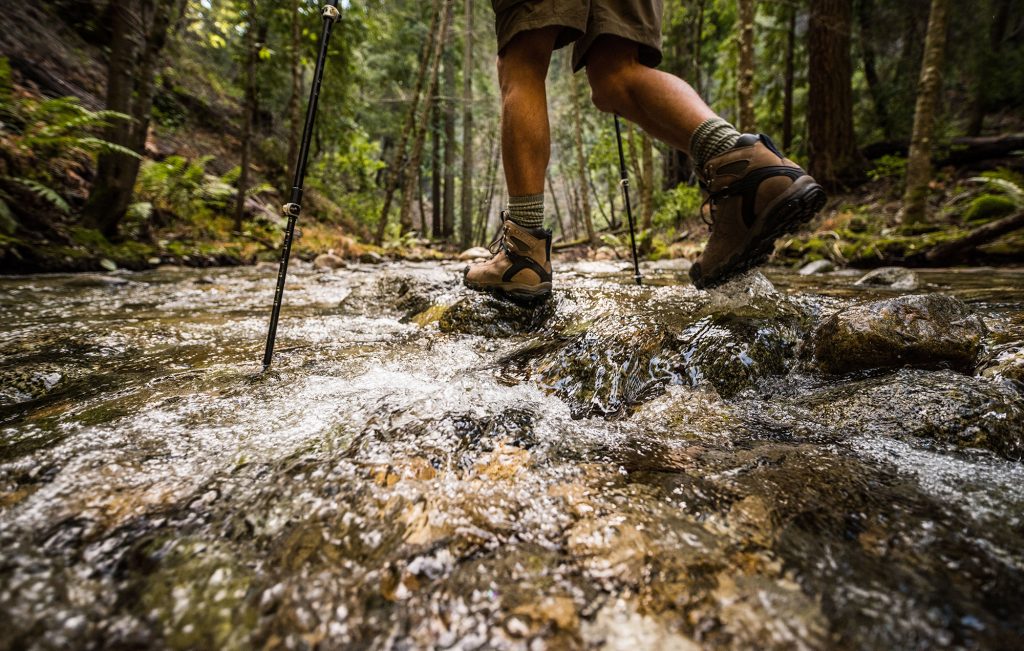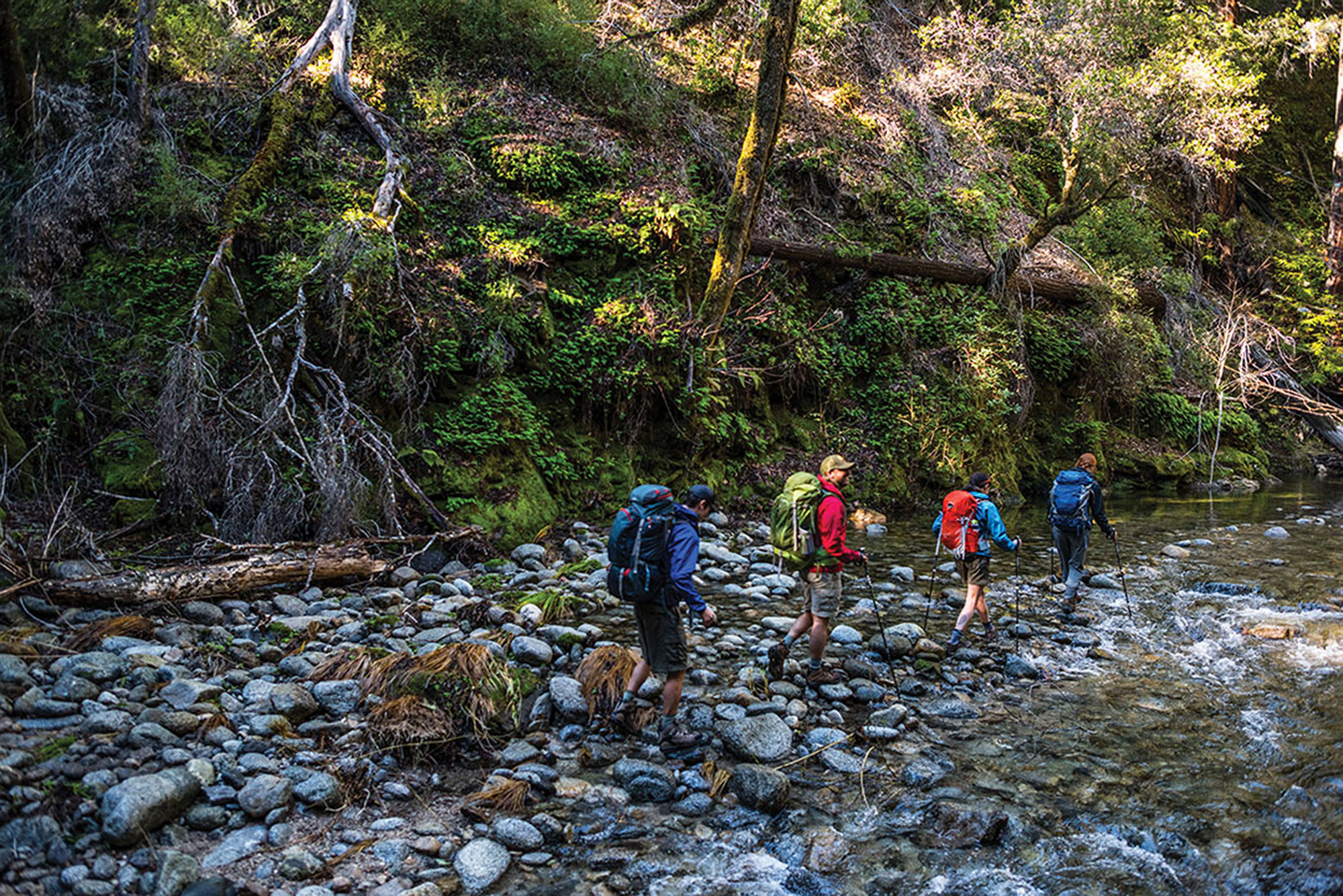Spring is the muddiest time of year on the trails in New England. Consequently, I need to make sure my hiking kit can handle all the challenges mud season presents. Below are must-have pieces of spring hiking gear that will make your early-season adventures more enjoyable.
10 Pieces of Must-Have Mud Season Hiking Gear
1. Appropriate Footwear
’Tis the season for waterproof footwear. Some people prefer trail runners, but mid-hikers and boots offer extra protection for long sessions on sloppy trails. Seriously, there’s nothing worse than ending a hike early because your feet are sopping wet.
2. Gaiters
Lightweight, packable, and relatively inexpensive, gaiters are worth their weight in gold for early spring hikes. They keep your pants from getting wet and muddy and prevent water from overflowing the top of your boots if you step into an unexpectedly deep puddle or stream. Another benefit of gaiters is that they keep ticks from sneaking up the inside of your pant legs.
3. Trekking Poles
Mud season often means hiking on slick, slippery trails. Trekking poles provide extra stability, helping keep you upright, and extra leverage if you need to pull your foot out of an extra-deep, sticky mud puddle. They also offer additional balance when crossing swollen spring streams and creeks. My current favorites are the Black Diamond FLZ Trekking Poles, which pack up so small that you have no excuse not to have them with you.
4. Puffy Jacket and Pants
A puffy jacket and pants won’t help with mud management, but they can provide a dry, warm layer if you slip on a tricky part of the trail and get wet or if the temperature is a lot cooler than what was forecasted. Puffy layers serve a number of purposes, for example:
- their warmth in combination with your body head speeds up the drying of wet layers
- they provide an alternative layer if you want to take off wet clothes
- they can help keep someone warm and comfortable while waiting for help in the event of an injury
After a long winter, it’s tempting to ditch insulated outerwear, but in my opinion, it’s worth the negligible extra weight and small amount of space it takes up.
5. Bug Clothing or Bug Repellent
Mud season coincides with the arrival of pests ranging from mosquitos to black flies to ticks. Insect-repellent clothing and bug spray are good options to avoid becoming a meal on a spring hike. Another nice addition is a bug head net.
You might not always use a bug head net on a spring hike, but you’ll always be glad you stashed one in your pack when the heat rises and the bugs come to life and begin swarming. A bug net is a huge morale booster when the bugs are bad.
6. Garmin inReach
It’s a good idea to carry an emergency communicator like a Garmin inReach in all seasons, however, it feels especially essential in spring when the odds of getting hurt on a wet, slippery trail are raised. A surprising amount of New England doesn’t have cell service and the ability to communicate with family, friends, or emergency personnel can dramatically speed up help in the event of an accident.
7. GPS App
A GPS app allows you to better understand the topography and get a sense of the places that dry quicker than others, such as higher-elevation spots and sloping trails. I love the GAIA app and use it all the time when I’m on the trails or preparing for a hike.
8. Tech Wash
Outdoor gear is expensive and your comfort, safety, and success in outdoor adventures depend on it—therefore, it’s important to stay on top of its maintenance. Cleaning and re-waterproofing gear like boots, rain pants, and rain jackets extends their life, improves their performance, and can add extra comfort to your next wet, muddy hike. Do yourself a favor: get some tech wash and clean your muddy gear.
9. Pack Towel
While not a necessity, a pack towel is a nice luxury to have at the end of a long day on muddy, wet trails. It’s great for wiping away the grit, grime, and sweat accumulated over a big hike and can make you monumentally more presentable for grabbing a beer or burger in town.
10. Protective Pad
If you have an old yoga mat or closed-cell sleeping pad, cut it in half and use it as a place to stand when changing out of damp hiking clothes or switching from boots to flip-flops. Another option is to use something like the EMS Siesta Folding Sit Pad. In paved parking lots, it can protect bare feet from sharp pebbles and broken glass, while in unpaved lots, it can help keep your feet (and car) clean.
Mud Season Hiking
Mud is a dirty word to many New England hikers, but with the right gear and proper preparation, there’s no reason not to take to the trails in spring.
Mike Spadea
Mike began working at Eastern Mountain Sports when he was just 15 years old. There he met a community of mentors who helped nurture his love of nature and introduced him to various new outdoor activities. Today, Mike serves on his local conservation commission and continues to share his knowledge of the outdoors with others.







